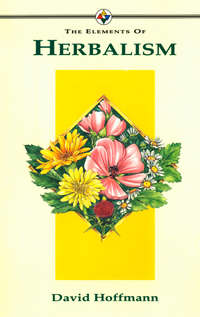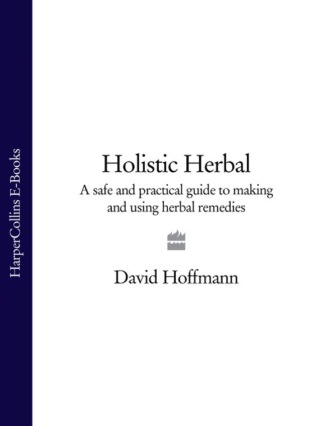
Полная версия
Holistic Herbal: A Safe and Practical Guide to Making and Using Herbal Remedies
A specific example is the phenomenon of secondary plant products. A number of plants produce a range of complex chemicals that play no identifiable role within the metabolism of that plant; we call them secondary plant products. The only way to explain their function within the individual plant scientifically is to assume that it is a very complex way of isolating waste matter accumulated from the metabolic process of the plant, and this would be totally out of keeping with the genius of the realm of plants for efficiency and design.
Secondary plant products such as the alkaloids, the glycosides and many other groups have a strong and marked influence on human and animal physiology. They are the agents that distinguish herbs from other plants, as pharmaceutical chemists are finding out. This is not merely a fortuitous accident. It is in fact the hallmark of Gaia. By eating plants we are linked to a circulatory system within the biosphere and to the energy source of the sun, since plants synthesise their own nutrition via sunlight. The secondary plant products are taking part in this circulation to reach us and to facilitate homeostasis. In a profound and ingenious way, our food can be our healing.
The realm of plants provides everything our body needs for a balanced and integrated existence. However, we are more than just a body; we also have consciousness, which brings other factors onto the stage. We not only have to take our animal body into consideration, but also our emotions, our mind and our spiritual nature. Harmony is no longer simply a matter of right diet or even right herbs, but also a matter of right feelings, right thoughts, lifestyle, attunement, actions—harmony of right relationship to our world and ourselves. Choice comes into the healing process when we see which of these areas we need to work with most.
It is impossible to generalise about the relative value of techniques that work with the physical body, with the emotions or spiritual energies. All have their role and can work together for healing to take place. It can be said that health lies in correct diet, or right use of allopathic drugs, or a free flow of soul energy. All these statements are correct and all of them are relative.
Where does herbal medicine fit into this picture? By the nature of the plant form, herbs work on the physical body. They are acting to integrate and balance its physiological function and to augment its innate vitality. When the body is balanced, the process of integrating the other aspects of our being is helped and catalysed. Whilst herbs will not replace relevant techniques like counselling or meditation, they will help the chalice of the body to be strong, receptive and supportive of the subtler aspects of human life.
Ecosystems and the biosphere
Every culture throughout the world—until very recently—used healing plants as the basis for their medicine. The therapeutic philosophy and rationale for plant use varies, but for thousands of years plants have demonstrated their efficiency and significance.
Each culture had a basic healing flora from which remedies were selected. This range of plants would vary from area to area depending on the local ecosystem. It is remarkable, however, to look at Wales, Southern India, the North American plains or any other area and find herbs with equivalent actions. The plant species, or even the botanical types might be totally different, but the range of human problems that can be dealt with botanically is the same. Whilst this supports the idea of Gaia providing a context for healing with the aid of herbs, it raises the question of whether today we should always stick to the flora provided by the local ecosystem within which we live.
The ecosystem available to us is no longer a local one, just as our human culture and consciousness is no longer a local one. We have become planetary beings, though not necessarily yet out of our own choice. Our food may come from anywhere in the world and modern information technology brings the world into our homes, opening our thoughts and emotional lives to a wide range of influences. We are already in many ways planetary citizens. As planetary beings within the body of Gaia, the whole of the world’s flora is available to us and rightly so.
We also have to consider human impact on local ecosystems. In Wales, for example, it used to be possible to obtain a large range of plants in natural habitats. Nowadays, due to intensive agriculture, to deforestation and reafforestation with foreign conifers, and the expansion and industrialisation of towns, there are few truly natural and wild habitats left; the range of plants available to us locally is therefore greatly reduced. This has been part of the ecological impact of humanity, unaware as it has been of whole systems and the value of their interrelationships.
Herbs in Healing
The potent healing qualities of herbs have been used in different therapeutic philosophies throughout history. We find plants used within the Indian ayurvedic system, in Chinese medicine alongside acupuncture and other techniques. They play a very important role in the spiritual healing ecology of the North American Indians. We see them being used as a source of drugs in the highly scientific and technological approach of modern pharmacy and allopathic medicine.
In fact allopathic medicine, now often called ‘orthodox’ medicine, has its roots in the use of herbs. Until about fifty years ago, nearly all the entries in pharmacopoeias describing the manufacture of drugs indicated a herbal origin. Only since the refinement of chemical technology and developments in chemotherapy has the use of herbs apparently diminished. Nonetheless it should be recognised that a majority of drugs still have their origin in plant material. Some very simple examples will illustrate this.
The amphetamines, which are based on the alkaloid ephedrine, supply stimulants and anti-asthmatic drugs and play an important role in medicine. Their exploitation followed the discovery of the active ingredient ephedrine in the Chinese herb Ma Huang, Ephedra sinica. The steroid drugs, the wonder drugs of the 60s now known to have unfortunate side effects, are still synthesised from a chemical extracted from the West African Wild Yam, Dioscorea spp. Aspirin too, was discovered in the last century from a number of plants like Meadowsweet and Black Willow. In fact its name comes from the old botanical name of Meadowsweet, Spirea.
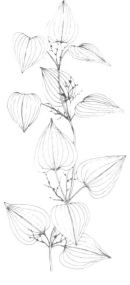
Wild Yam
So we see that allopathic medicine still uses herbs, if in a limited way. Plants are approached as a source of active ingredients, specific bio-active chemicals that can be analysed, synthesised and used in the form of potent drugs. The body is seen as being essentially biochemical in nature, so when something goes wrong, it does so on the level of chemical processes and molecules. To get it to work correctly we thus have to use chemicals. If such an attitude is correct, why not use isolated constituents from plants? After all, nature provides powerful agents like morphine, still one of the best painkillers known, so why not approach plants this way? In the context of the scientific approach, to view the human being as a biochemical laboratory where specific chemicals have specific effects seems justified and valid.
But can we really reduce a human being to the level of molecules? The human being surpasses description in its beauty and dynamic complexity of form and function, in potential expression and creativity. Of course on the level of physical form our body is also biochemical, but its organisation transcends by far the realms of biochemistry textbooks. Even if we were to fully comprehend the molecular complexities, we would not find what makes us human. There is a powerful and synergistic force at work within us—call it life, life-force, vital force or other names—that is us and is involved with the whole of us on all levels, not just the biochemical. At death the same chemicals are present but this energy of life and synthesis has gone. It is impossible to define this force, but the holistic approach is based on and works with a vision of humanity as animated by it.
Herbal medicine in its holistic sense recognises humanity as an expression of life, enlivened with life-force, and herbs can work with this whole being, not just specific symptoms. They do function through biochemical interactions and specific applications, but they do so in a way that augments the vital processes of the body. On the biochemical level, the numerous ingredients in a herb work in a synergistic way, with elements involved in the process that chemotherapy would not even consider as being active. In later chapters we will hear more about this, for instance in a comparison of Foxglove and Lily of the Valley, in the section on circulation.
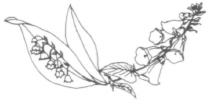
If we just looked at herbs as a source of valuable chemicals we would limit their healing power, for beyond the physical level they can also work on the level of the life-force. As they heal our bodies, they may also heal our hearts and minds, for they open the body to a clear flow of integrating and synergising vital energy.
Homeostasis
The body maintains a steady internal state, where temperature, blood sugar level, and other variables are kept within narrow limits, this process being known as homeostasis. This ability is fundamental to life, an expression of a force within working toward harmony and integration. If the body were not able to maintain this state of homeostasis we would not survive long.
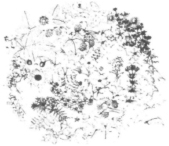
This principle of homeostasis also applies to our environment. Our environment adapts to changes, but, like us, it is only able to do this within narrow limits. Beyond those, it dies.
As human beings we live in contact with two environments, the outer ecological one and the inner physiological one. Herbs can be seen as a bridge between the outer and inner environment, augmenting health by facilitating harmony and resonance between the two. Once we are in balance, we can radiate our higher state of health back into the ecosystem from which the herbs came.
If we slightly shift our view, we can see that we are really part of the whole of ecology, not separate from it. When we are healed with the help of plants, a part of the ecology is healed. By healing our bodies and our minds we will be more present as whole beings. And it is hoped that health will enable the growth of new awareness so that we can become conscious co-creators with nature and not remain the abusers and rapists that recent history shows us to be. A state of wholeness and health can affect our whole environment. It can affect our relationships, which affect society, and so potentially act to heal all humanity.
If we consider the concept of Gaia and remember that the Earth constantly works towards staying in a state of homeostasis, we can see how herbs act as homeostatic agents. Their purpose is to keep an element of the ecology—humanity—integrated and in harmony with the whole ecology. We can compare it to the purpose of hormones. Hormones released in one part of the body lead to a specific action in another part, integrating and harmonising our inner environment.
Chemotherapy cannot be substituted for this work of herbs. Chemicals do not work towards the integration of a system; at their best they bring some elements back into alignment. We can look at health as at any ecological system aiming for homeostasis. It is always in motion, with varying elements from outside influencing the system, which does its best to stay in balance and thus to stay alive. Health is when the personal ecosystem, the inner space that has been called the ‘milieu interieur’, is in balance with the outer space, and both of them are one. As J.Z. Young says: ‘The entity that is maintained intact, and of which we all form a part, is not the life of any one of us, but in the end the whole of life upon the planet.’*
Self-Healing
The word healing has its roots in the Greek word ‘holos’, the same word that has given us ‘whole’ and ‘holistic’. Healing is the expression of wholeness, health is wholeness. The experience and expression of this quality can only come from within the individual, it never comes from an outer source such as a therapist or teacher. Just as all paths of spiritual development tell us to look within, so for our healing we must look to our inner selves.
Health is also the expression of integrated being that a person embodies. The emotions, thought-life and spiritual flow are as important to health as is the state of organs and tissues within the body. Whether we are concerned about being healthy, regaining health or moving to greater health, the whole of the being is involved.
The person who is ‘ill’ is in fact the healer. Aid can be sought from ‘experts’, whether allopaths or herbalists, psychotherapists or witch doctors, but the responsibility for healing can never be truly handed to anyone other than the person desiring healing. Healing comes from within, from truly embracing the life that flows within us. Herbs will aid in this process, but healing is inherent in being alive. It is our gift and our responsibility. This may come as a surprise to most of us, conditioned as we are to hand our power over to ‘experts’, whether they are doctors or politicians. In healing as in all life, we are free, and we are the divinely empowered authority for the process of our unfolding lives.
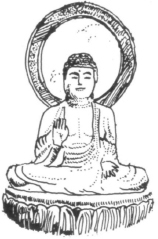
Healing is rarely an act of consciously harnessing inner energy and light, but is always a release and expression of this inner power. Whilst the healing process is unique, an expression of life in a person, this miraculous event can be facilitated by various tools and techniques. Numerous therapies have been developed throughout the unfoldment of human culture which have much to offer as healing arts. However, these do not heal. They cannot heal, they can only aid the body with its own innate healing power.
The apparent multitude of healing techniques, often appearing to contradict each other, can be seen as an interrelating ecology of approaches. I call it therapeutic ecology. Seeing the connections between the different schools of healing makes it clear that a unique blend of therapies may ideally suit one person whilst a different blend would be right for someone else. This provides us with a choice as to the best way to aid the self-healing process.
The following diagram places the individual—the heart and centre of self-healing—in the middle of an array of therapies. The foundation is Gaia, our beloved Planet, sustaining and supporting us. The overlighting presence is that of grace, embracing and illuminating us with the mystery of God’s loving presence.
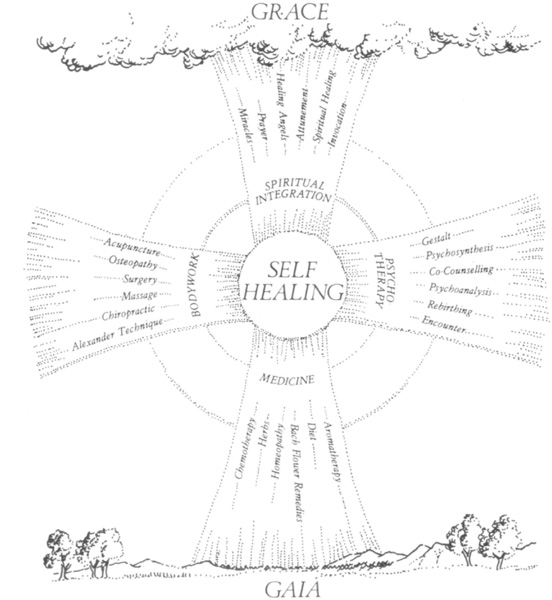
I suggest four branches of healing techniques: medicine, body work, psychotherapies and methods of spiritual integration. Each of these is divided to show individual paths that represent many more, but there are limitations to this diagram as it is two dimensional, suggesting that the relationships of the tools of self-healing are linear. This could not be further from the truth, for the actual relationships are complex and numerous, creating a rich diversity. It is best to view this diagram as part of a three-dimensional web, creating a geodesic pattern of healing possibilities. An example would be an approach based upon herbs, massage, psychosynthesis and meditation. This combination might offer the person involved exactly what they need to facilitate self-healing. However, it may be that homeopathy by itself is appropriate. The combinations offer great subtlety and diversity of approach.
Medicine
The word ‘medicine’ here is used to describe anything that is taken—anything that is a gift from the Earth. At first sight it might seem strange that drugs are in the same group with herbs and homeopathy. They are all things, and as such, they are part of the diversity and richness of our planet. Whether it be hydrocortisone, False Unicorn Root, or a Bach Flower Remedy, all are produced from the body of the Earth. It would be a mistake to judge one against another. All have their place. What is needed is clear discrimination as to the appropriate treatment for each unique individual. There is nothing universally bad about chemotherapy or universally good about herbs. Let us be thankful for the choice.
Body work
The physical body has a deep wisdom, far outstretching the mind’s ability to conceive of it. A whole range of ways for freeing this wisdom and releasing the healing activity of the body have been developed. Perhaps the most limited and primitive method is surgical manipulation. But then there are times when all that can be done is to remove diseased tissue. This is necessary far less often than our surgeons believe, but it is still a valid and occasionally appropriate form of body work. Acupuncture, the ancient Chinese therapy of balancing body energy, is a most useful way of working with the body. In addition to these two very different types of body work we can include the manipulative techniques of physiotherapy, osteopathy, chiropractic, massage and Rolfing. Added to these things done to us are those we ourselves do. This would include Yoga, jogging, dance and all forms of physical exercise and expression.
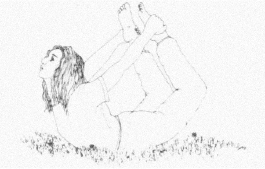
Psychotherapies
Much of the pain and trauma that we experience in our lives is the result of emotional and mental problems. There are a range of therapies that help us move towards an inner knowing and an integrative realignment of our psychological selves. It is not just the emotionally traumatised or mentally confused person that benefits from an exploration and healing of the recesses of our emotional and mental nature. There is much that can be learnt by the ordinary individual to promote wholeness. Liberating the potential of a person can holistically transform them, which in turn affects their whole world. Reviewing belief systems, self image, patterns of behaviour and deep-seated drives or motivations within a clear context can liberate great reserves of healing energy and affirm an individual’s life and purpose.
Within the range of therapies there may be differing views of a human being’s psychic make-up that focus upon different parts of our ‘inner geography’. But they can all aid in the release of mental and emotional blocks. Approaches range from traditional psychoanalysis to the humanistic therapies and those called transpersonal, which recognise and work with the spiritual dimension as well as other aspects of our being.
Spiritual integration
Inherent in the holistic view of humanity is the perception of an integrating centre, a spiritual core, a source of life and love. Healing can be brought about by integrating the experiences of daily existence with the inner core of our lives. There are many varieties of spiritual paths. The paths to God are as numerous as the people going there. In approaching human spirituality from the angle of healing, there are ways in which we can open to our higher selves, and ways in which others can affect our ‘spiritual bodies’. One approach would be prayer or a variety of meditation, and another spiritual healing or the techniques that work with what has been called the ‘subtle body’. A factor that must not be overlooked is the possibility of miracles, a profound form of healing, and perhaps the only time that healing is done for a person and then it is only done by the spirit.
In all this we can see how the inner process of healing can be helped by a multiplicity of approaches. Many are the ways to free up and liberate the body’s innate powers of wholeness and regeneration. However, no matter how sincere the attempts at healing, if we don’t also look at our lifestyle and way of being in the world to see what changes are indicated—the healing won’t really work.
An important first step in the process of healing is the removing of value judgements. Being ill is not ‘bad’ and being well is not ‘good’. This is not to deny that one is more preferable and appropriate, but the rigidity and pressure contained within any judgement of good and bad will itself contribute to the disease. Illness may often be an opportunity created within one’s life to change and transform, and seen this way, it may be approached with less resistance and disapproval. There are times when the problem is an opportunity to use strong will and fight the illness, and times to be still and at peace with the process. It is impossible to generalise as to the way of approaching the lesson offered. To judge it—and yourself—is a mistake.
It is worth remembering that we are what we eat, but also what we breathe, what we think, what we say, what we see. So whilst all of what has been said concerns our inner lives, the interaction with the environment we choose to live in is just as important. The important word here is choose. We can choose to change. We are powerful and free in our lives. If we cannot change the outer situation then we can change our attitude to it.
The belief system through which we interpret the world colours our experience of both the world and ourselves. Beliefs can limit our expression and the clear flow of energy and consciousness through us. It is good to examine our beliefs to see if they support our life and purpose. In tandem with this goes self-image. The way we see ourselves, our gifts and limitations, needs and strengths, physical appearance and health, will largely create us. Self-image can have a profound impact on health, as skin and weight problems demonstrate, although other factors may be involved too.
If our relationships are not healthy, we won’t be. We can create relationships that affirm us, that reinforce our movement towards health and wholeness. Consciously choose the people with whom you share your life and work. Do your home, work place and recreational space reflect to you joy and positivity? If not, then change it or yourself. This may be very difficult, but then that is what healing is about, transforming ourselves and our world.
The most important relationship of all is possibly the one we have with nature and the Planet. Well-being is dependent upon our interaction with Gaia, and wholeness can be expressed through a conscious interplay with the greater whole of which humanity is part. The spirit of life can freely flow from nature to humanity when given the opportunity. A mutuality of life is then created, the context within which all healthy relationships are built. This experience of nature may be climbing mountains or sitting under a tree. The form is not important. The openness to a communion with nature is.
What about the books we read, the films and television we watch, the billboards we see, the politics we support? Is the music we listen to good for our health? Are your friends good for you? These are all relevant questions, none of which have assumed answers. Healthy music is that which helps you to experience your wholeness. For some people this may be Bach whilst for others it may be The Grateful Dead. The task is taking responsibility for our own lives. We can choose who we want to be and then create ourselves!


